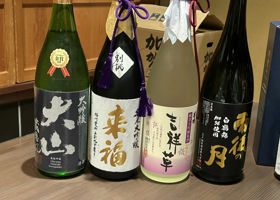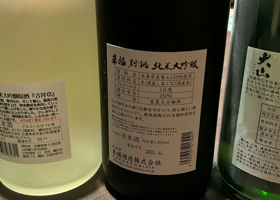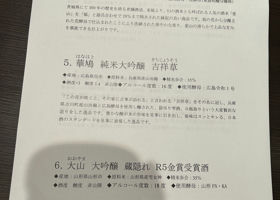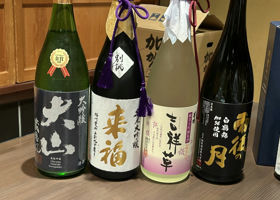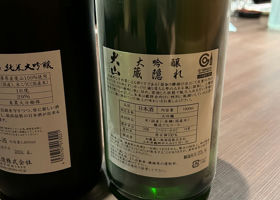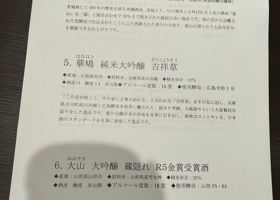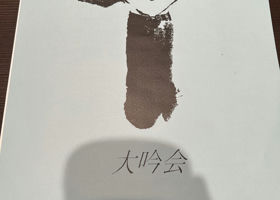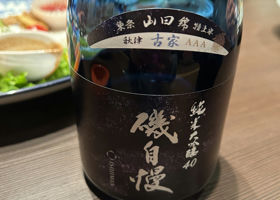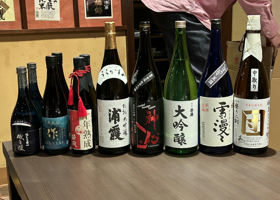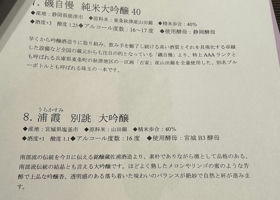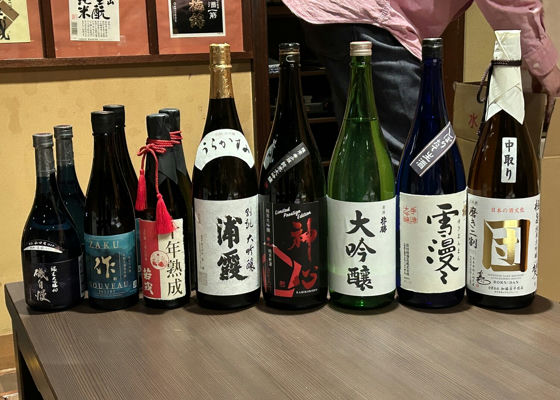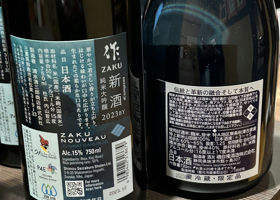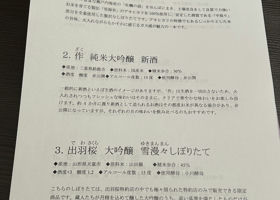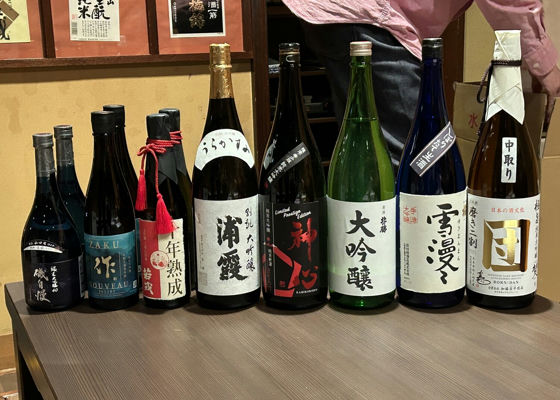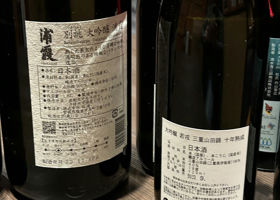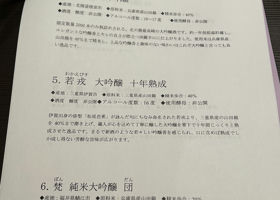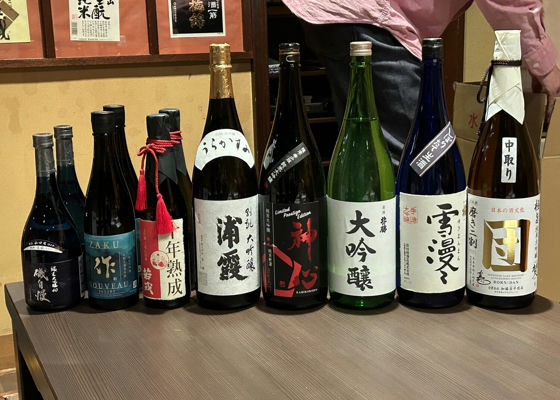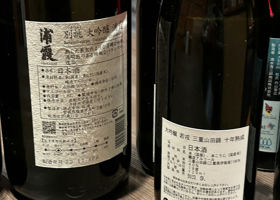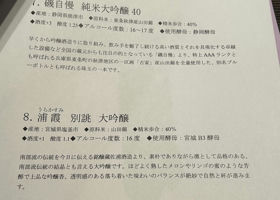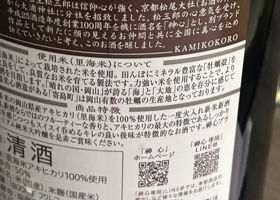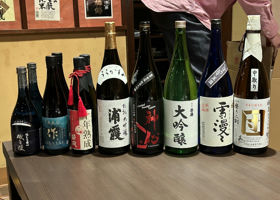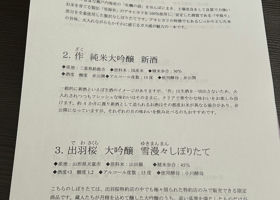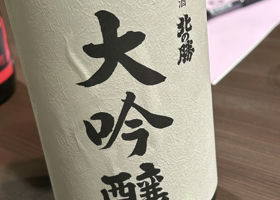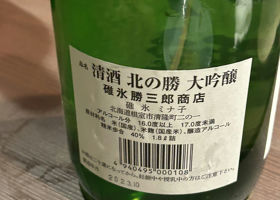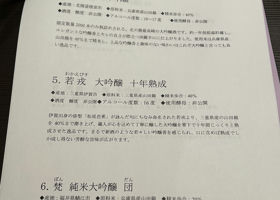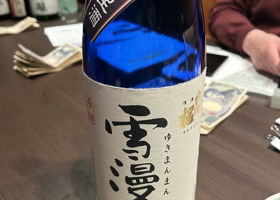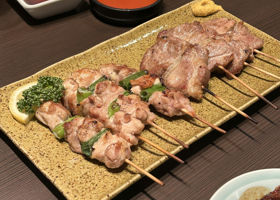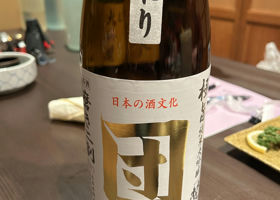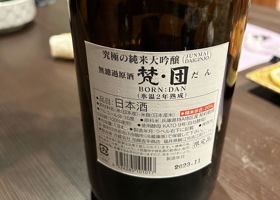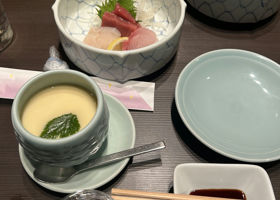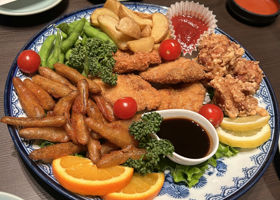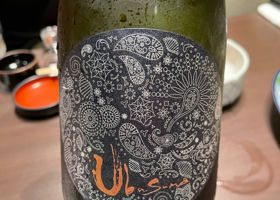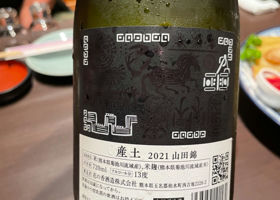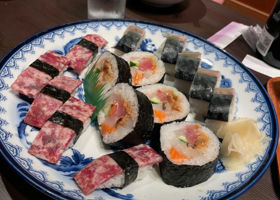Timeline
酔生夢死Daigin Kai (2)
My No.1 in this lineup❗️
Great aroma is more white grape than cherry blossom⭕️
The refined sweetness of Aizan followed by a lingering aftertaste is also a good choice: ⭕️
◆Production area: Chikusei City, Ibaraki Prefecture ◆Rice: Aiyama ◆Polishing ratio: 29
◆Sake meter degree: +2 Acidity: 1.3 ◆Alcohol percentage: 16
Yeast used: Flower yeast (Tohno-Tansan Isolated strain)
From Raifuku, a long-established sake brewery with a 300-year history in Ibaraki Prefecture, this is an auspicious product made from the popular sake rice "Aiyama", also known as "phantom sake rice", polished to 29% to match the word "Fuku". The sake is brewed with flower yeast isolated from cherry blossoms, resulting in a refined and gorgeous aroma, and the smooth and elegant sweetness of Aizan. Ooyama蔵隠れR5全国新酒鑑評会金賞受賞酒大吟醸斗瓶取り無濾過 酔生夢死Daigin-kai
Gorgeous aroma reminiscent of Yamagata⭕️
Great sharpness, this is a gold medal winning sake. ❗️
Very popular at meetings ❗️
◆Production area: Yamagata City, Yamagata Prefecture ◆Rice: Yamagata Yuki-No-Megami ◆Polishing ratio: 35
◆Acidity: Not disclosed ◆Alcohol: 18% ◆Yeast: Yamagata FN/KA
The rice used for this sake has been changed from "Yamadanishiki" to "Yuki-Jojin" since 2020, and it has been awarded the Gold medal for three consecutive years. The top clear liquid of the sake was once collected in a tobin, racked to a 1.5 liter bottle, and then heated directly in the bottle to make a luxurious bottle that was processed for the sake to be exhibited. The sake is bottled without aging so that the aroma and flavor of the award-winning sake can be enjoyed as it is. 酔生夢死vocal recital
◆Production area: Yaizu City, Shizuoka Prefecture
Rice: Yamadanishiki produced in Tojo Akitsu
Sake meter degree: +3, Acidity: 1.25
Alcohol percentage: 16-17
Rice polishing ratio: 40
Yeast: Shizuoka yeast
This is a gem of a bottle, also known as a blue bottle, made entirely from Yamadanishiki produced in a section of "Furuya" in the Akitsu district of Tojo-machi, Hyogo Prefecture, which is also known as a special AAA rank Yamadanishiki. It is a gem of a bottle, also known as a blue bottle. 酔生夢死vocal recital
◆Place of Origin: Suzuka City, Mie Prefecture
◆Rice: Domestic rice ◆Polishing ratio: 50
◆Acidity: Not disclosed ◆Alcohol level: 15% ◆Yeast used: Not disclosed
Generally speaking, new sake has an image of being unpasteurized, but "Saku" is not made from unpasteurized sake at all, so you can enjoy its clear and gorgeous flavor while still having a fresh taste. Sake is made as new sake over a period of about four months, and the rice used for each sake may differ. 酔生夢死vocal recital
◆Production area: Iga City, Mie Prefecture
Rice: Yamadanishiki from Mie Prefecture, Japan Polishing ratio: 40
◆Acidity: Undisclosed ◆Alcohol percentage: 16
◆Yeast used: Undisclosed
Named after the season in which Matsuo Basho, a famous haiku poet from Iga, composed his poem, Waka Ebisu is a masterpiece of Daiginjyo made by polishing up to 40% Yamada-Nishiki produced in Mie prefecture and carefully acidified by the brewer for 10 years below zero. It has a youthful ginjo aroma as if it were new sake, and when you put it in your mouth, it spreads a mellow flavor that can only be achieved by aging. 酔生夢死vocal recital
◆Production area: Shiogama, Miyagi pref.
◆Rice: Yamadanishiki ◆Polishing ratio: 40
◆Sake meter degree: +1 Acidity: 11
Alcohol percentage: 16
Yeast used: Miyagi B3 yeast
This daiginjo from Saura Shuzo, a renowned brewery that carries on the traditions of the Nanbu style, is a crystallization of the Nanbu style tradition, simple yet dignified and dignified. The perfect balance between the mellow and elegant ginjo aroma, which is reminiscent of ripe melon or apple nectar, and the clear, calm taste will naturally make your cup go down a notch. 酔生夢死vocal recital
◆Production area:Asakuchi city, Okayama pref.
Rice: Satoumi rice Akihikari produced in Okayama
◆Polishing ratio: 50
◆Sake meter: -1 Acidity: 1.6 ◆Alcohol percentage: 16% ◆Yeast: Association No.901
This luxurious freshly squeezed sake is made from 100% "Satoumi Rice" Akihikari, which is produced by sowing "oyster shells" from the mineral-rich Seto Inland Sea in the rice fields to improve the soil and grow good, strong rice, and using all the "Nakadori" portion, which is of stable quality. It is a bottle with the characteristic flavor of akihikari rice and a faint gaseous sensation even though it is fire-aged. 酔生夢死vocal recital
◆Production area: Nemuro, Hokkaido
◆Sake Acidity: Undisclosed
Rice: Yamadanishiki from Hyogo Prefecture
Rice polishing ratio: 40
Alcohol percentage: 16-17
Yeast used: Not disclosed
This is Kitanokatsu's highest grade daiginjo-shu, bottled in a limited quantity of only 2000 bottles. It has been bottled in the traditional onno-zakura (warmed in an oven for about a year or so), and has an elegant ginjo aroma and a sharp, clean, dry taste. The rice used is Hyogo Prefecture-produced Yamadanishiki polished to 40%, and its elegant ginjo aroma and clean taste make it a true Daiginjo-shu. 酔生夢死vocal recital
◆Production area: Tendo-city, Yamagata ◆Rice: Yamadanishiki ◆Polishing ratio: 45
Sake meter: +3, Acidity: 1.2, Alcohol level: 15%, Yeast: Ogawa yeast
This Shiboritate is a limited edition product available only at a very limited number of Dewazakura distributors. Only those daiginjos that meet the highest standards of quality are allowed to call themselves Yukimanma. 酔生夢死vocal recital
◆Production area: Sabae, Fukui ◆Rice: Yamadanishiki from Hyogo Prefecture ◆Polishing ratio: 20
◆Acidity: Not disclosed ◆Alcohol level: 16% ◆Yeast: KAT09
Named after the brewery's owner, Atsuhide Kato, this is a gem of a sake with 20% polishing (20% polishing), the highest polishing level of the brewery.
It is blended with sake that has been aged at -10°C for one to two years, and bottled from the "Nakadori" portion, the highest quality portion of the unrefined sake, making it a very luxurious sake. You can enjoy the refined taste that only high refining can provide. 酔生夢死Hatsu Daigin Kai
Ingredient rice Yamadanishiki 55 polished
Regulation: Kikuchi River Basin / Namaishime
Production area: Wasui district, Kikuchi River basin, Kumamoto Prefecture, Kumamoto Prefecture
Alcohol content 13%.
Kumamoto No.9 yeast
In 2015, we started sake rice cultivation with dozens of farmers in the Wassui area of the Kikuchi River basin. Currently, they are in charge of about 12% of the entire farmland in the town of Wasui. The company is very proud of the fact that all of the Yamada-Nishiki used to make sake is grown in the Wassui area of the Kikuchi River basin, which has a 2,000-year history of paddy rice culture.
Strong gas pressure, be careful when opening the bottle. RecommendedContentsSectionView.title
